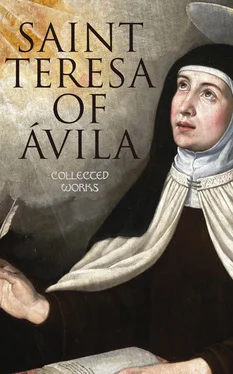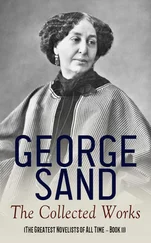In note 2 to Chap. XI. Mr. Lewis draws attention to a passage in a sermon by S. Bernard containing an allusion to different ways of watering a garden similar to St. Teresa's well-known comparison. Mr. Lewis's quotation is incorrect, and I am not certain what sermon he may have had in view. Something to the point may be found in sermon 22 on the Canticle (Migne, P. L. Vol. CLXXXIII, p. 879), and in the first sermon on the Nativity of our Lord (ibid., p. 115), and also in a sermon on the Canticle by one of St. Bernard's disciples (Vol. CLXXXIV., p. 195). I am indebted to the Very Rev. Prior Vincent McNabb, O.P., for the verification of a quotation from St. Vincent Ferrer (Chap. XX. § 31).
Since the publication of Mr. Lewis's translation the uncertainty about the date of St. Teresa's profession has been cleared up. Yepes, the Bollandists, P. Bouix, Don Vicente de la Fuente, Mr. Lewis, and numerous other writers assume that she entered the convent of the Incarnation 4on November 2nd, 1533, and made her profession on November 3rd, 1534. The remaining dates of events previous to her conversion are based upon this, as will be seen from the chronology printed by Mr. Lewis at the end of his Preface and frequently referred to in the footnotes. It rests, however, on inadequate evidence, namely on a single passage in the Life 5where the Saint says that she was not yet twenty years old when she made her first supernatural experience in prayer. She was twenty in March, 1535, and as this event took place after her profession, the latter was supposed by Yepes and his followers to have taken place in the previous November. Even if we had no further evidence, the fact that St. Teresa is not always reliable in her calculation should have warned us not to rely too much upon a somewhat casual statement. In the first chapter, § 7, she positively asserts that she was rather less than twelve years old at the death of her mother, whereas we know that she was at least thirteen years and eight months old. As to the profession we have overwhelming evidence that it took place on the 3rd of November, 1536, and her entrance in the convent a year and a day earlier. To begin with, we have the positive statement of her most intimate friends, Julian d'Avila, Father Ribera, S.J., and Father Jerome Gratian. Likewise doña Maria Pinel, nun of the Incarnation, says in her deposition: "She (Teresa of Jesus) took the habit on 2 November, 1535." 6This is corroborated by various passages in the Saint's writings. Thus, in Relation VII., written in 1575, she says, speaking of herself: "This nun took the habit forty years ago." Again in a passage of the Life written about the end of 1564 or the beginning of the following year, 7she mentions that she has been a nun for over twenty-eight years, which points to her profession in 1536. But there are two documents which place the date of profession beyond dispute, namely the act of renunciation of her right to the paternal inheritance and the deed of dowry drawn up before a public notary. Both bear the date 31 October, 1536. The authors of the Reforma de los Descalços thought that they must have been drawn up before St. Teresa took the habit, and therefore placed this event in 1536 and the profession in 1537, but neither of these documents is necessarily connected with the clothing, yet both must have been completed before profession. The Constitutions of Blessed John Soreth, drawn up in 1462, which were observed at the convent of the Incarnation, contain the following rule with regard to the reception and training of novices: 8 Consulimus quod recipiendus ante susceptionem habitus expediat se de omnibus quae habet in saeculo nisi ex causa rationabili per priorem generalem vel provincialem fuerit aliter ordinatum . There was, indeed, good reason in the case of St. Teresa to postpone these legal matters. Her father was much opposed to her becoming a nun, but considering his piety it might have been expected that before the end of the year of probation he would grant his consent (which in the event he did the very day she took the habit), and make arrangements for the dowry. One little detail concerning her haste in entering the convent has been preserved by the Reforma and the Bollandists, 9though neither seem to have understood its meaning. On leaving the convent of the Incarnation for St. Joseph's in 1563, St. Teresa handed the prioress of the former convent a receipt for her bedding, habit and discipline. This almost ludicrous scrupulosity was in conformity with a decision of the general chapter of 1342 which said: Ingrediens ordinem ad sui ipsius instantiam habeat lectisternia pro se ipso, sin autem recipiens solvat lectum illum . As St. Teresa entered the convent without the knowledge of her father she did not bring this insignificant trousseau with her; accordingly the prioress became responsible for it and obtained a receipt when St. Teresa went to the new convent. The dowry granted by Alphonso Sanchez de Cepeda to his daughter consisted of twenty-five measures, partly wheat, partly barley, or, in lieu thereof, two hundred ducats per annum. Few among the numerous nuns of the Incarnation could have brought a better or even an equal dowry.
The date of St. Teresa's profession being thus fixed on the 3rd of November, 1536, some other dates of the chronology must be revised. Her visit to Castellanos de la Cañada must have taken place in the early part of 1537. But already before this time the Saint had an experience which should have proved a warning to her, and the neglect of which she never ceased to deplore, namely the vision of our Lord; 10her own words are that this event took place "at the very beginning of her acquaintance with the person" who exercised so dangerous an influence upon her. Mr. Lewis assigns to it the date 1542, which is impossible seeing that instead of twenty-six it was only twenty-two years before she wrote that passage of her life. Moreover, it would have fallen into the midst of her lukewarmness (according to Mr. Lewis's chronology) instead of the very beginning. P. Bouix rightly assigns it to the year 1537, but as he is two years in advance of our chronology it does not agree with the surrounding circumstances as described by him. Bearing in mind the hint St. Teresa gives 11as to her disposition immediately after her profession, we need not be surprised if the first roots of her lukewarmness show themselves so soon.
From Castellanos she proceeded to Hortigosa on a visit to her uncle. While there she became acquainted with the book called Tercer Abecedario. Don Vicente remarks that the earliest edition known to him was printed in 1537, which tells strongly against the chronology of the Bollandists, P. Bouix, and others. Again, speaking of her cure at Bezadas she gives a valuable hint by saying that she remained blind to certain dangers for more than seventeen years until the Jesuit fathers finally undeceived her. As these came to Avila in 1555 the seventeen years lead us back to 1538, which precisely coincides with her sojourn at Bezadas. She remained there until Pascua florida of the following year. P. Bouix and others understand by this term Palm Sunday, but Don Vicente shows good reason that Easter Sunday is meant, which in 1539 was April the 6th. She then returned to Avila, more dead than alive, and remained seriously ill for nearly three years, until she was cured through the miraculous intervention of St. Joseph about the beginning of 1542. Now began the period of lukewarmness which was temporally interrupted by the illness and death of her father, in 1544 or 1545, and came to an end about 1555. Don Vicente, followed by Mr. Lewis, draws attention to what he believes to be a "proof of great laxity of the convent," that St. Teresa should have been urged by one of her confessors to communicate as often as once a fortnight. It should be understood that frequent communion such as we now see it practised was wholly unknown in her time. The Constitutions of the Order specified twelve days on which all those that were not priests should communicate, adding: Verumtamen fratres professi prout Deus eis devotionem contulerit diebus dominicis et festis duplicibus ( i.e. , on feasts of our Lady, the Apostles, etc.), communicare poterunt si qui velint . Thus, communicating about once a month St. Teresa acted as ordinary good Religious were wont to do, and by approaching the sacrament more frequently she placed herself among the more fervent nuns. 12
Читать дальше












